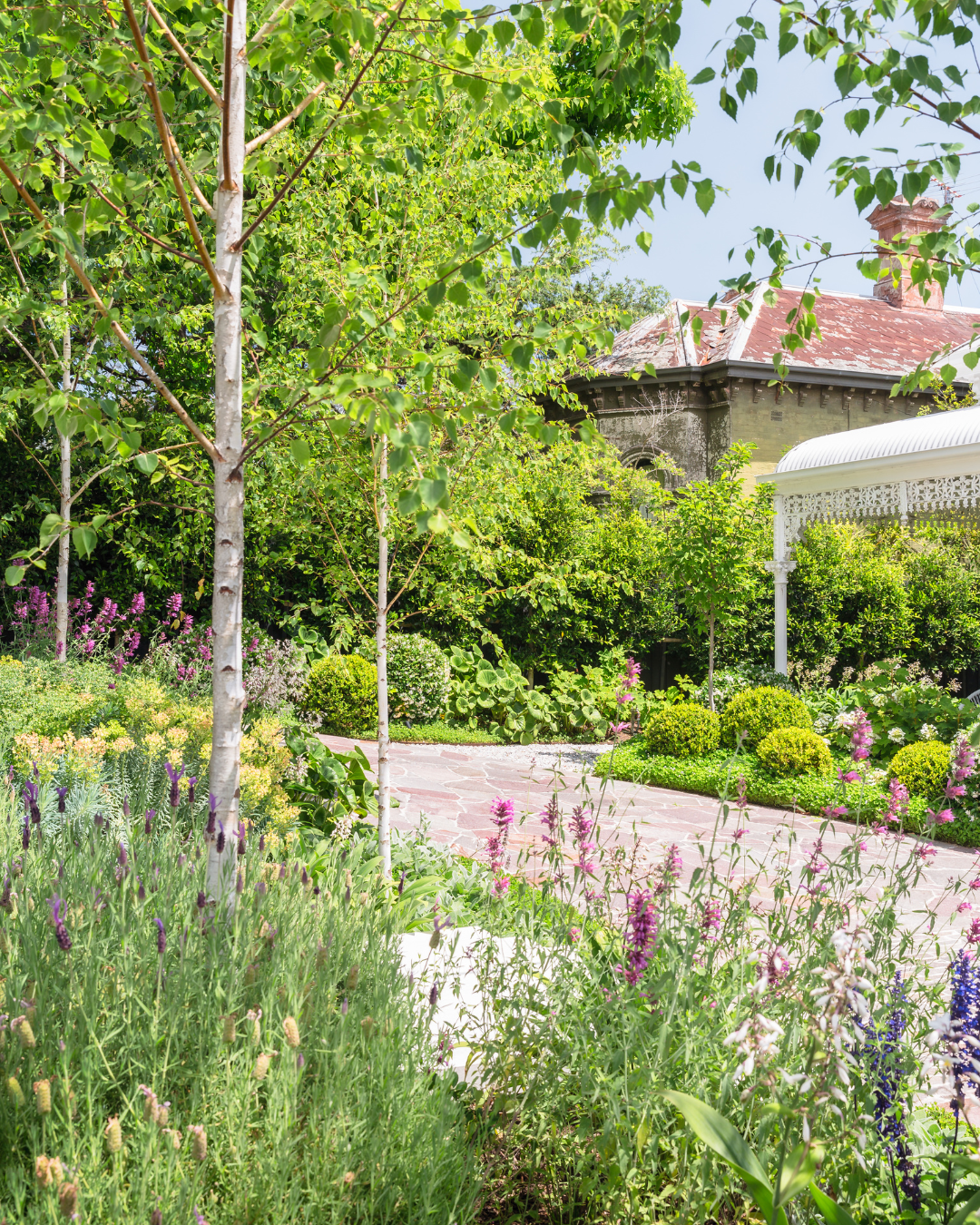A formal garden is the epitome of sophistication—clean lines, symmetry, and timeless elegance. The right trees are essential to achieving this aesthetic, providing structure, balance, and year-round beauty. In this guide, we’ll explore five exceptional trees—Laurus Nobilis (Bay Trees), Pencil Pines, Ficus Hillii, Pyrus Capital, and Magnolia grandiflora ‘Little Gem’—that are perfect for formal gardens. These trees are chosen for their ability to enhance structure, create focal points, and deliver polished, refined landscapes.
1. Laurus Nobilis (Bay Trees)
Why It’s Perfect for Formal Gardens:
Bay Trees are a classic choice for formal gardens, offering dense, aromatic foliage that can be shaped into elegant topiaries or structured hedges. Their glossy, dark-green leaves and ability to withstand pruning make them ideal for creating defined, symmetrical spaces.
-
Mature Height: 6–12m
-
Mature Width: 3–6m
-
Best Uses: Topiary, formal hedging, feature planting
-
Key Features: Glossy evergreen leaves, strong fragrance, drought-tolerant
-
Growth Rate: Moderate
Pair With:
-
Rhaphiolepis for contrasting foliage and blooms.
-
Buxus ‘English Box’ for layered hedging.
-
Hydrangeas for soft, colorful underplanting.
2. Pencil Pines
Why It’s Perfect for Formal Gardens:
Pencil Pines are the ultimate vertical accent for formal gardens. Their narrow, columnar shape creates striking visual lines, perfect for framing entrances, lining pathways, or adding height without overwhelming the space.
-
Mature Height: 3–6m
-
Mature Width: 0.5–1m
-
Best Uses: Vertical accents, framing, formal screening
-
Key Features: Fine evergreen foliage, low maintenance, full sun tolerant
-
Growth Rate: Slow to moderate
Pair With:
-
Ficus Hillii for layered greenery.
-
Buxus ‘Japanese Box’ for structured borders.
-
Hydrangeas for soft, colorful contrast.
3. Ficus Hillii
Why It’s Perfect for Formal Gardens:
Ficus Hillii is a versatile evergreen tree with dense foliage, making it perfect for formal hedging or as a feature tree. Its ability to be pruned into precise shapes ensures it fits seamlessly into structured garden designs.
-
Mature Height: 6–10m
-
Mature Width: 3–5m
-
Best Uses: Hedging, screening, feature planting
-
Key Features: Glossy dark-green leaves, adaptable to pruning, full sun tolerant
-
Growth Rate: Moderate
Pair With:
-
Pyrus Capital for contrasting textures.
-
Murrayas for fragrant, layered hedging.
-
Gardenias for a touch of elegance and fragrance.
4. Pyrus Capital (Ornamental Pear)
Why It’s Perfect for Formal Gardens:
Pyrus Capital is a sleek, upright tree that adds vertical structure and seasonal interest to formal gardens. Its symmetrical growth habit and vibrant autumn foliage make it a standout choice for modern designs.
-
Mature Height: 8–12m
-
Mature Width: 3–4m
-
Best Uses: Avenue planting, feature tree, vertical accents
-
Key Features: Glossy green leaves turning vibrant red in autumn, urban-tolerant
-
Growth Rate: Moderate
Pair With:
-
Pencil Pines for vertical layering.
-
Buxus ‘English Box’ for structured borders.
-
Hydrangeas for soft underplanting.
5. Magnolia grandiflora ‘Little Gem’ (Dwarf Southern Magnolia)
Why It’s Perfect for Formal Gardens:
Magnolia grandiflora ‘Little Gem’ is a compact evergreen tree that brings classic Southern charm to formal gardens. Its glossy, dark-green leaves and large, fragrant white flowers add a touch of luxury and elegance. Perfect for smaller spaces, this tree maintains a neat, upright form and can be pruned to fit structured designs.
-
Mature Height: 4–6m
-
Mature Width: 2–3m
-
Best Uses: Feature tree, formal hedging, focal point
-
Key Features: Glossy evergreen leaves, fragrant white flowers, compact growth
-
Growth Rate: Moderate
Pair With:
-
Buxus ‘Japanese Box’ for structured borders.
-
Gardenias for a fragrant, elegant pairing.
-
Hydrangeas for soft, colorful underplanting.
Why These Trees Work for Formal Gardens
-
Structure and Symmetry: Each tree offers a defined shape that enhances the clean lines and geometric layouts of formal gardens.
-
Year-Round Appeal: Evergreen options like Ficus Hillii and Pencil Pines ensure your garden looks polished in every season.
-
Versatility: From topiaries to hedges, these trees can be shaped to fit any formal design.
-
Low Maintenance: These trees are easy to care for, requiring minimal pruning and upkeep to maintain their refined appearance.
Tips for Planting and Maintaining Trees in a Formal Garden
-
Planting for Symmetry: Use precise measurements to ensure even spacing and alignment.
-
Regular Pruning: Maintain shape and density with seasonal pruning.
-
Seasonal Care: Fertilize and mulch to support healthy growth.
-
Soil Preparation: Choose soil that suits each tree’s needs for optimal growth.
FAQs
Q: What trees are best for formal hedging?
A: Laurus Nobilis, Ficus Hillii, and Pencil Pines are excellent choices for formal hedging.
Q: Can evergreen trees be used in formal gardens?
A: Yes, evergreens like Ficus Hillii and Pencil Pines provide year-round structure.
Q: How often should I prune trees in a formal garden?
A: Prune at least once or twice a year to maintain shape and density.
Final Thoughts
Formal gardens demand trees that deliver structure, elegance, and timeless appeal. Laurus Nobilis, Pencil Pines, Ficus Hillii, Pyrus Capital, and Magnolia ‘Little Gem’ are the ultimate choices for creating a polished, sophisticated landscape. Pair them with complementary plants like Buxus, Hydrangeas, and Rhaphiolepis to elevate their beauty and functionality.
Explore our collection today and transform your garden into a timeless masterpiece.















